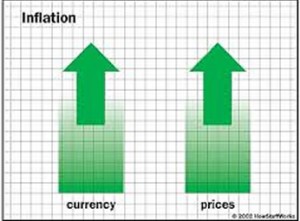Ghana producer price inflation hits 11.3% in May
 The year-on-year producer inflation rate for all industry in May recorded 11.3 per cent, representing a 0.1 percentage point decrease relative to the rate in April of 11.2 per cent.
The year-on-year producer inflation rate for all industry in May recorded 11.3 per cent, representing a 0.1 percentage point decrease relative to the rate in April of 11.2 per cent.
The month-on-month change in producer price index between April and May 2016 was 0.9 per cent.
The utilities sub-sector recorded the highest year-on-year producer price inflation rate of 37.0 per cent, followed by the manufacturing sub-sector with 9.2 per cent.
The mining and quarrying sub-sector recorded the lowest year-on-year inflation rate of -1.4per cent.
The monthly changes in the producer price index indicated that mining and quarrying recorded the highest monthly change rate of 2.4 per cent, followed by the manufacturing sub-sector with 0.7 per cent.
The utilities sub-sector recorded the lowest monthly inflation rate of 0.1 per cent.
Mrs Philomena Nyarko, Government Statistician, announced this at a media interaction in Accra, and said during May 10, out of the 16 major groups in the manufacturing sub-sector recorded inflation rates higher than the sector average of 9.2 per cent.
She said the manufacture of paper and paper products recorded the highest inflation rate of 41.9 per cent while publishing, printing and recorded media recorded the lowest producer price inflation rate of -5.7 per cent.
“The year-on-year inflation on ex-factory prices of goods and services was 11.3 percent for May. The rate increased from 18.8 per cent in May 2015 to record 23.1 per cent in June 2015. The rate then declined consistently from 10.2 per cent in July 2015 to 2.9 per cent in October 2015.
However, it increased to record 11.0 per cent in December 2015. In January 2016, the rate increased to record 16.3 per cent but declined in February 2016 to 14.5,” she said.
The inflation rate in the petroleum sub-sector was -9.6 per cent in May 2015. The rate was the same in May 2016 but it increased to -0.01 percent in June 2015.
Subsequently, the rate declined consistently to record -34.5 per cent in October, 2015. It however increased to -21.8 per cent in December 2015, and rose further to record 3.3 percent in January 2016.
It then declined to 0.5 per cent in February but increased to record 2.9 per cent in March as a result of base drift effect. The rate increased again to 6.5 per cent in April, but declined to 6.1 per cent in May.
Source: GNA
